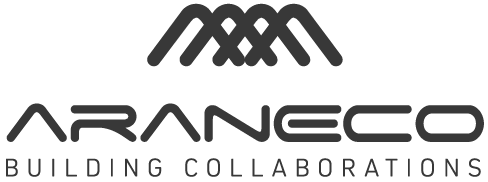As customer expectations continue to rise, and as operational demands on contact centers also continue to increase, many business leaders are looking for ways and solutions to optimize their service efforts.
As business leaders consider cloud contact center solutions, there are various features and capabilities that ought to be considered in order to remain competitive. Many turn to Contact Center as a Service (CCaaS) platforms as a way of meeting today’s operational and customer needs.
Read on as we cover what CCaas platforms are, their benefits, and the key features to look for before choosing one solution over another.
What is CCaaS?
Contact Center as a Service, also known as CCaaS and hosted contact center, refers to a cloud-based customer experience solution that provides businesses with the tools and infrastructure needed to manage and optimize their customer service operations. Unlike traditional on-premises contact center systems, CCaaS leverages the flexibility and scalability of the cloud, allowing organizations to seamlessly handle customer interactions across multiple channels—phone, email, chat, social media, and more.
As organizations pursue digital transformation initiatives to enhance customer service experiences, call centers are often viewed as the low-hanging fruit where business leaders can achieve clear and significant improvements. By adopting a CCaaS solution, businesses can fully transition from their on-premise call centers to advanced, cloud contact center operations—resulting in a markedly superior customer interaction environment.
CCaaS vs UCaaS: What’s the Difference?
While CCaaS is tailored for enhancing and managing external customer interactions, UCaaS—Unified Communications as a Service—platforms can unify and streamline internal communications and collaboration within an organization.
While the two solutions service distinct needs, there is some overlap: Both leverage cloud infrastructure to provide scalable and flexible communication capabilities. Both also offer robust APIs and support for third-party integrations, allowing organizations to customize and extend their communication capabilities to meet specific business needs. Moreover, UCaaS and CCaaS platforms support remote and distributed workforces by providing reliable and consistent communication tools accessible from anywhere.
So, although both CCaaS and UCaaS are delivered via the cloud and aim to enhance communication within organizations, they serve different primary functions and cater to distinct needs. Depending on your organization’s specific needs—whether focusing on customer interactions or internal collaboration—you may choose one or both solutions to optimize your communication infrastructure.
1. Primary purpose: CCaaS solutions focus on managing omnichannel customer interactions and support operations. It can handle large volumes of inbound and outbound communications, primarily for customer service and support teams. UCaaS solutions, on the other hand, aim to centralize various internal communication and collaboration tools and streamline internal communications among employees.
2. Target users: CCaaS solutions are mainly used by customer service departments, call centers, and support teams that interact directly with customers. UCaaS solutions are utilized by all employees—particularly including remote and distributed teams—to enhance internal communication and collaboration.
3. Core features: CCaaS platforms’ core features include Automatic Call Distribution (ACD), Interactive Voice Response (IVR), Customer Relationship Management (CRM) integration and advanced analytics and reporting. Such platforms also offer features that facilitate omnichannel support across phone, email, chat, and social media. UCaaS platforms’ core features include VoIP calling, video conferencing, instant messaging, and presence management. It also includes file-sharing and collaboration tools, and integration with various productivity suites, such as Microsoft 365 and Google Workspace.
4. Scalability: CCaaS platforms scale to handle fluctuating customer service demands, such as seasonal spikes in support requests. UCaaS platforms scale to accommodate organizational growth, functioning to add more users and communication tools as needed.
5. Analytics and reporting: CCaaS platforms offer detailed analytics on customer interactions, agent performance, call metrics, and customer satisfaction to improve service quality, among other key metrics. UCaaS platforms provide insights into communication patterns, usage statistics, and collaboration effectiveness — oriented toward enhancing internal processes.
6. Customization and configuration: CCaaS platforms are highly customizable to fit specific customer service workflows, including tailored IVR menus, routing rules, and reporting dashboards. UCaaS platforms are also customizable, yet are perfect for streamlining and enhancing organizational communication and collaboration by integrating voice, video, messaging, and conferencing services into a unified customer center platform.
7. Cost structure: CCaaS pricing is often based on the number of agents, volume of interactions, and specific features required for customer support operations. UCaaS pricing typically depends on the number of users, the range of communication tools included, and the level of service required for internal communications.
The Benefits of CCaaS
CCaaS platforms offer customer service teams tried-and-true functionality that meets today’s increasing customer demands. They can also lower operational costs, facilitate scalability, increase productivity, offer access to next-generation tools, and provide real-time, actionable data.
Lowers operational costs
Cloud contact centers offer remarkable efficiency that translates to substantial cost savings. Unlike traditional call centers that rely on hardware and telephony systems, CCaaS solutions are more cost-effective to deploy, operate, and maintain.
A recent Total Economic Impact (TEI) study by Forrester revealed that Webex Contact Center—a leading CCaaS platform—delivered a 262% return on investment over a three-year period. More specifically, the study found that organizations saved over $15 million in three years through various cost reductions and operational improvements—achieving a net present value of $11.45 million and experiencing a payback period of less than six months.
These savings were driven by reduced IT support costs, labor savings from deflected calls, legacy license eliminations, streamlined customer care and quality management, and minimized downtime.
Facilitates scalability
In terms of scalability, Forrester’s study participants reported an improvement in call deflection rates from 8% to 20% after implementing Webex Contact Center. This enhanced deflection rate reduces the number of calls reaching live agents, thereby allowing staff to manage inquiries more effectively and scale operations without the need to expand the workforce.
The study’s participants also experienced a decrease in IT support costs. Notably, one case study highlighted a reduction in IT support staff from 12 full-time equivalents to just two, observed two to three years post-implementation.
The head of end-user experiences at a manufacturing organization highlighted to Forrester how Webex Contact Center’s ability to scale quickly has simplified the integration of contact centers from acquired companies. “With our first acquisition [before Webex Contact Center], it took us 13 months. When we acquired another company, it took us six months end-to-end. Now it takes us only three months. … It’s so much easier to absorb a large contact center coming in because all we need is internet access.”
Increases productivity
The Forrester TEI study reports that Webex Contact Center’s consolidation of communication channels, alongside the use of enhanced IVR systems, reduces the average handling time per interaction.
More generally, CCaaS platforms facilitate increased productivity through real-time actionable analytics, workforce management capabilities, and ACD technologies. Together, these solutions empower each individual agent to manage calls more efficiently while optimizing their own workflows.
Offers AI-capabilities
CCaaS platforms integrate advanced contact center AI technologies to enhance both customer experience and operational efficiency. Utilizing generative AI, machine learning, and natural language processing, these solutions provide sophisticated features that support omnichannel support and unified communication.
The key AI capabilities that CCaaS platforms possess include:
- AI-powered customer data and agent assistance: AI aggregates and synthesizes customer data from multiple channels, offering agents a comprehensive view of each customer’s history, preferences, and sentiment.
- Virtual agents for enhanced self-service: Contact center AI deploys virtual agents and chatbots that handle routine inquiries across various communication channels, including both chat and voice.
- Intelligent call routing and queuing: AI-driven ACD intelligently routes incoming calls to the most suitable agents based on factors like availability, skill set, and customer priority. This ensures customer-specific call handling and notably improves first-contact resolution rates.
- Speech analytics and sentiment analysis: AI analyzes speech patterns and customer sentiment in real-time. This helps in seamlessly identifying trends, monitoring customer experience, and enabling proactive management of service quality.
- Advanced analytics: AI systems generate a variety of actionable, real time analytics, including customer sentiment analysis, call volume forecasting, agent performance metrics, speech analytics, real-time monitoring of customer interactions, and predictive insights into customer behavior.
By incorporating these AI capabilities, CCaaS solutions not only streamline contact center operations, but also deliver a more personalized and responsive customer journey.
Choosing a solution: 5 CCaaS features to look for
From actionable analytics monitoring across the full customer journey to advanced security measures, here is a list of the five key CCaaS features to search for before taking your pick.
1. Real-time analytics monitoring: The platform you choose should provide real-time, relevant data through an intuitive, centralized dashboard. The data should be easily accessible to leadership and agents alike, rather than its retrieval being manually intensive and requiring specialized training.
2. Video conferencing: While some platforms integrate with existing video solutions, like Zoom and Microsoft Teams, other CCaaS solutions extend their unified communication capabilities to include their own native video conferencing solution. Notably, Webex Contact Center’s video conferencing capabilities extend to include AI capabilities, such as automatic note-taking, real-time transcriptions, sentiment analysis, and more.
3. Omnichannel management: Your contact center likely manages interactions across a variety of channels. It’s important to ensure that your solution of choice unifies all communication channels into a single, cohesive platform. Specifically, ensure your platform of choice centralizes the management of voice, email, chat, social media, and SMS interactions—allowing agents to switch effortlessly between them without losing context.
4. AI-driven chatbots: Generative AI chatbots can help your agents in more ways than one. They handle routine inquiries, provide instant responses to common questions, assist in triaging and prioritizing customer requests, offer real-time information and suggestions to agents, and much more. Ensure that your platform of choice offers AI capabilities that align with your unique organizational objectives.
5. Embedded security measures: Ensure your CCaaS provider incorporates advanced security measures. As you consider a CCaaS solution, make sure it offers end-to-end encryption, multi-factor authentication, role-based access controls, data encryption at rest and in transit, and measures that align with your industry’s regulatory requirements.
Beyond looking out for these five features, also make sure that your provider of choice has a strong reputation. G2 is a go-to platform for CCaaS solution reviews. Using G2, here is one recent testimonial of Webex Contact Center: “Webex Contact Center can manage high call volumes while maintaining excellent call quality. Integrating it with CRM has been effortless, helping us personalize our service. The agent interaction is also straightforward and user-friendly.”
Webex Contact Center: An All-In-One Call Center Solution
Webex Contact Center is an all-in-one, next generation CCaaS solution that can allow you to seamlessly meet increasing operational demands. As an industry leader, Webex Contact Center consistently delivers innovative solutions that enable organizations to enhance their customer experiences.
With Webex Contact Center, you can reduce average handling time, eliminate customer story retelling, offload repetitive work to AI, and keep agents at peak performance. As the Global Manager of Infrastructure and Cloud of Cover-More put it, “By removing all the old stuff, and moving to Webex, we actually saved over 30% on our operating costs year over year.”
Learn about how Webex Contact Center can optimize your customer experience.
The post Choosing a CCaaS platform: Your ultimate guide appeared first on Webex Blog.


